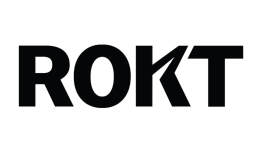But on Thursday morning’s (July 17) second quarter 2025 investor earnings call, the Minneapolis-based financial institution’s executives stressed to investors that they was doubling down on embedded payments, blockchain and AI-infused infrastructure.
The earnings report tell a story that diverges depending on which lens you apply. On paper, it was a solid performance: net income rose 13.2% year-over-year to $1.8 billion, with diluted earnings per share climbing to $1.11 from $0.97 a year ago. Fee income grew 4.6%, helped by strong showings in payments and investment services, and return on tangible common equity hit an impressive 18%.
“Our fee growth was led by payment services revenue, trust and investment management fees, and treasury management fees, which benefited from greater interconnectedness across the franchise and self-funded investments in our organic growth,” said Gunjan Kedia, president and CEO of U.S. Bancorp.
But the market reacted coolly. Revenue and net interest income came in soft, with Kedia guiding toward a more cautious Q3 — highlighting macroeconomic headwinds and deposit competition. Shares dipped following the report, as analysts zoomed in on what wasn’t growing fast enough.
At the same time, U.S. Bancorp is fast-tracking a series of ambitious innovations that are reshaping how banks deliver value in an era of platform-first ecosystems and real-time finance.
See also: Inside U.S. Bank’s Push to Simplify Global Payments in an Era of ‘Co-opetition’
Payments at the Core of Growth
Much of U.S. Bank’s strategy for repositioning itself as an infrastructure bank for the digital economy hinges on Elavon, U.S. Bancorp’s merchant services subsidiary. In June, Elavon jumped two spots in the Nilson Report rankings to become the fifth-largest U.S. merchant acquirer, now processing over $576 billion annually.
More notably, it’s now the second-largest bank-owned processor of Visa and Mastercard payments — a testament to how deep U.S. Bank has embedded itself in the payment plumbing of modern commerce.
“Payments isn’t just a product anymore — it’s a platform,” Kedia said during the company’s earnings call. “We’re seeing success in linking our treasury, card and acquiring capabilities into one digital framework for businesses.
That platform-centric vision is showing up in Elavon’s new embedded payment suite, launched this quarter. Designed for seamless integration into enterprise software, eCommerce systems and FinTech stacks, the suite allows developers to bake secure, scalable transaction capabilities into apps and workflows — whether in retail, healthcare, hospitality or beyond.
It’s a decisive shift from being a back-office processor to becoming a front-end enabler of commerce. And while competitors like Stripe and Square often dominate the headlines, U.S. Bancorp’s bank-backed advantage allows it to offer more cohesive financial service layers, from underwriting and settlement to compliance.
Related: U.S. Bank Focuses on ‘Totality of the Customer’
Rebuilding the Tech Stack
Driving all of this is a deeper, less visible shift: the modernization of U.S. Bancorp’s infrastructure.
Technology and communications expenses rose 4.9% year-over-year this quarter, reaching $534 million. While higher costs might spook some investors, the spend reflects a deliberate strategy to build a tech stack capable of supporting AI-driven insights, real-time payments and embedded finance.
It’s showing in how U.S. Bank is consolidating its card issuance platform with Fiserv’s Credit Choice, an integrated solution for consumer and small business cards. Once complete, it will allow partner banks to offer digital-first credit cards that customers can manage alongside debit cards within a unified interface. That kind of experience design, rare among traditional banks, is increasingly table stakes in a world of FinTech-native expectations.
Internally, U.S. Bancorp has also focused on refining automation, data architecture and cybersecurity controls — elements that aren’t flashy but are foundational to scaling digital products with integrity.
In many ways, the company is sketching a blueprint for a financial institution that doesn’t just digitize banking, but embeds banking into everything else. It’s a subtle but seismic shift — from offering products, to offering platforms; from being a service provider, to being an infrastructure partner.
That model is especially relevant in an economy where finance is increasingly API-based, modular and woven into SaaS, marketplaces and mobile ecosystems. U.S. Bancorp is betting that the future of banking won’t be in branches or balance sheet spread — but in the software behind your favorite app.




